Phacelia distans, Distant Phacelia
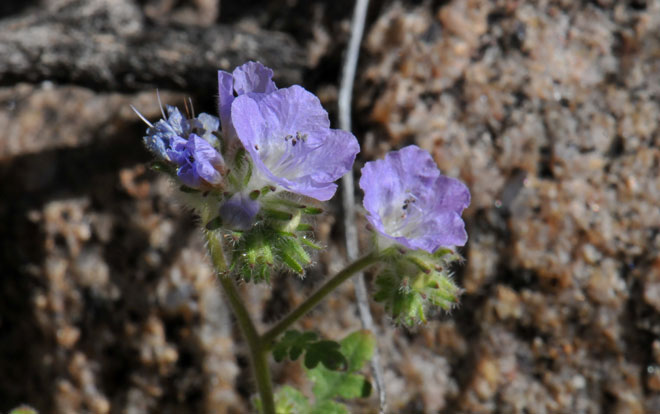
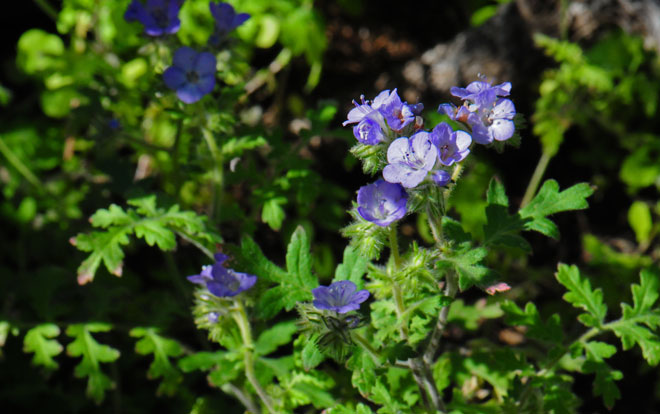
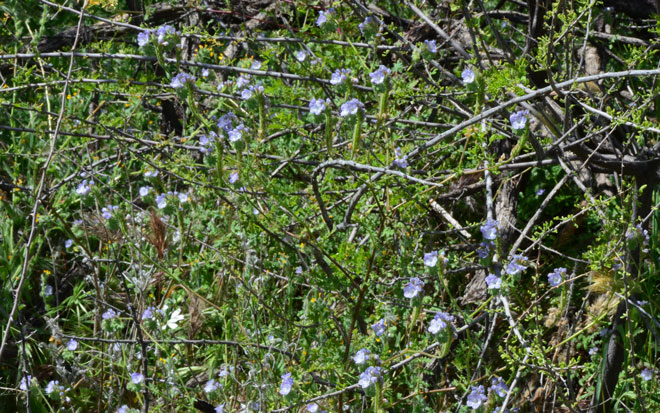
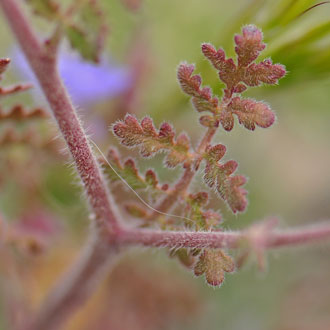
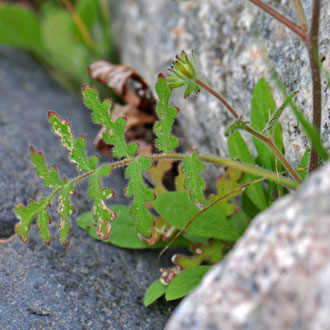
Scientific Name: Phacelia distans
Common Name: Distant Phacelia
Also Called: Caterpillar Phacelia, Caterpillar Weed, Distant Scorpion-weed and Wild Heliotrope.
Family: Hydrophyllaceae (Boraginaceae, Hydrophylloideae), the Waterleaf Family
Synonyms: (Phacelia cinerea, Phacelia distans var. australis)
Status: Native
Duration: Annual, perennial;
Size: Clambering to 2½ feet or more.
Growth Form: Forb/herb; decumbent, erect, stiff glandular hair.
Leaves: Green; leaf shape highly variable, bipinnate or pinnatifid, plants with few large leaflets others with several small leaflets.
Flower Color: Blue, bright blue or whitish; flowers small, attractive, corolla funnel- or bell-shaped; fruit a capsule.
Flowering Season: February to May; March to May in California.
Elevation: 1,000 to 4,000 feet.
Habitat Preferences: Common under and in bushes for support, along washes, foothills and slopes, clay or rocky soils. California; North Coast Ranges, Sacramento Valley, San Joaquin Valley, Central Western California, Southwestern California and East of Sierra Nevada.
Recorded Range: In the United States Phacelia distans is native to the southwest in; AZ, CA and NV. Introduced in WI and MA. Also native to Baja California and northern Mexico. In Arizona it is found throughout most of the state above 3,500 feet, few records in the northeast part of the state.
North America & US County Distribution Map for Phacelia distans.
U.S. Weed Information: No information available.
Invasive/Noxious Weed Information: No information available.
Wetland Indicator: In North America Phacelia distans has the following wetland designations; Arid West, OBL; Northcentral & Northeast, UPL; Western Mountains, Valleys, and Coast, OBL.
OBL = Obligate Wetland, almost always occur in wetlands;
UPL = Obligate Upland, almost never occur in wetlands.
Threatened/Endangered Information: No information available.
In the Southwestern United States: Arizona has 49 species of genus, California has 96 species, Nevada has 54 species, New Mexico has 23 species, Texas has 13 species, Utah has 42 species. All data is approximate and subject to taxonomic changes.
Comments: Distant Phacelia is superficially similar to Blue Fiestaflower, Pholistoma auritum, and Dainty Desert Hideseed, Eucrypta micrantha.
Special Value to Native Bees; Species of the genus Phacelia are known to, or thought to attract large numbers of native bees including Yellow Faced Bees, Miner Bees and Mason Bees. This information was provided by the Pollinator Program at The Xerces Society for Invertebrate Conservation.
In Southwest Desert Flora also see; Desert Bluebells, Phacelia campanularia, Cleftleaf Wildheliotrope, Phacelia crenulata, Fremont's Phacelia, Phacelia fremontii, Varileaf-Phacelia, Phacelia heterophylla, Kaweah River Scorpion-weed, Phacelia magellanica and Lacy Phacelia, Phacelia tanacetifolia.
Distant Phacelia is cooked and eaten as greens.
See ethno-botanical uses at Native American Ethnobotany, University of Michigan, Dearborn.

